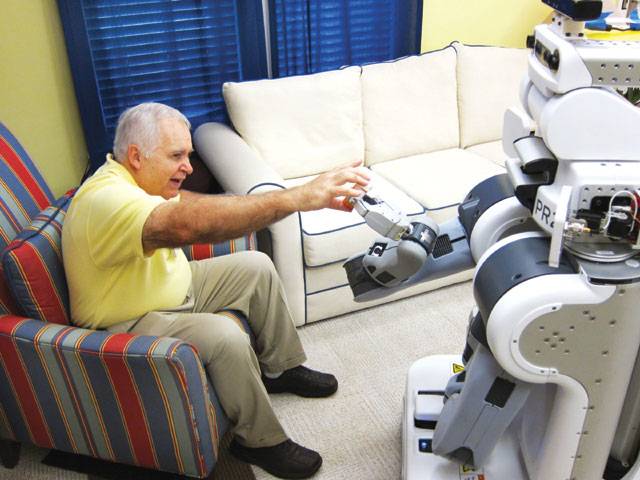AFP
LAS VEGAS
She stood on the floor of the Consumer Electronics Show, carried on conversations, blinked her eyes and sang a convincing rendition of ‘Take Me Home, Country Roads.’
It would have been unremarkable if Chihira Aico were not a robot. ‘Hello, my name is Chihira Aico. I am 32 years old, although, technically, I was born in September 2014. Look how expressive I am!’ she said. Robots like Toshiba’s are becoming so eerily realistic they could be mistaken at first glance for a human. She sings, smiles, raises her hands and has lifelike facial expressions controlled by 15 tiny pneumatic actuators.
These robots are increasingly being developed as personal assistants, companions, hosts and aides for medical situations. ‘We made her like a human being because true communication is also based on facial expressions and gestures,’ said Toshiba’s Taihei Yamaguchi. Yamaguchi said a robot like Chihira Aico could serve as a kind of hostess for the 2020 Olympic Games but the design is aimed for health care, where robots can assist in monitoring and diagnoses. But in her own words: ‘In the future, I want to take up the challenge of a wide assignment of tasks: counsellor, newscaster, cheerleader, entertainer and many others!’ The speech was pre-programmed and it will take time to develop the kinds of science fiction robots which can respond to language and move autonomously, Yamaguchi said. It is possible, as Toshiba showed, to develop robots that look like humans.
But there remains a debate whether robots should be designed as humanoids, like in the film ‘Blade Runner,’ or as mechanical ones like in ‘Star Wars.’ Another vision of the robot, ‘Meccanoid’, from the toymaker Spin Master, has a body of polycarbonate Erector set pieces with large lamps for eyes. It too can speak from a pre-programmed text.
Friday, April 19, 2024
The ‘human’ side of robots at electronics show

SC suspends ECP’s re-polling order in PP-51
April 19, 2024
Court approves plea bargain of Parvez Elahi’s co-accused
April 19, 2024
Zardari creates another parliamentary record
April 19, 2024
KP politicians, civil society laud President’s address
April 19, 2024
A Tense Neighbourhood
April 19, 2024
Dubai Underwater
April 19, 2024
X Debate Continues
April 19, 2024
Hepatitis Challenge
April 18, 2024
IMF Predictions
April 18, 2024
Kite tragedy
April 19, 2024
Discipline dilemma
April 19, 2024
Urgent plea
April 19, 2024
Justice denied
April 18, 2024
AI dilemmas unveiled
April 18, 2024
ePaper - Nawaiwaqt
Advertisement
Nawaiwaqt Group | Copyright © 2024





